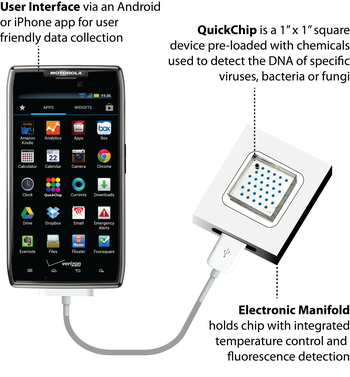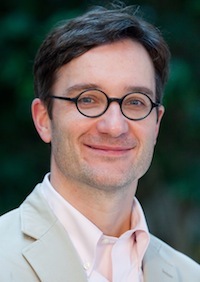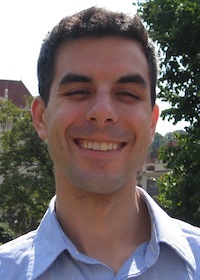Looking before you leap, failing fast, and the path to commercialization of technology
The QuickChip sounded like a killer idea: a gadget about one inch square that could, in just 15 minutes, identify bacteria, fungi, and viruses at a patient’s bedside. Instead of sending samples to a lab and waiting hours or days, physicians would know immediately what they were dealing with and how best to treat it.
In 2011, Doug Weibel, an assistant professor of biochemistry at UW–Madison, was developing such a device — but instead of plunging ahead with prototyping and marketing, he hired Adam Siegel as an “entrepreneur-in-residence” to figure out whether and where a market existed. In startup lingo, this process of figuring out the market is called a needs assessment.

QuickChip employs advanced DNA-based technology to identify many possible pathogens at once, using the power, computer capacity and visual readout from a smartphone.
Photo illustration: Doug Weibel/Adam Siegel
“There is a need in research universities for someone familiar with both science and business to evaluate whether new technologies are useful enough to become startup companies,” says Siegel, who has a Ph.D. in engineering and has developed diagnostic technologies similar to the one that Weibel is using.
Siegel moved to Madison in 2012 and began working half time in Weibel’s lab, under a grant to Weibel from the Bill & Melinda Gates Foundation.
With three years’ experience as a management consultant, it was easy to think of the hard questions, Siegel says. “We have this really cool device that can detect bacteria when connected to your smartphone. It could be the basis for a great research paper, but if you want to start a company, you have to ask, ‘Who really cares about it? Doctors? Clinics? Hospitals? Dentists? Veterinarians?’”
As Weibel envisions it, the device would be connected to a smart phone for power, assay readout and computing capacity. After brief training, operators would inject a blood, saliva or urine sample into the chip, place it in an electronic cartridge connected to a smartphone, wait 15 minutes, and read the results on the phone’s screen. “Everything is automated by the app on the phone,” Weibel says.

Doug Weibel
The chip uses a low-power, DNA-amplification process discovered in 2000, and combines high sensitivity, high specificity and the ability to detect hundreds of pathogens at once.
Siegel says he used market analysis, interviews and surveys to scope out the business case — “anything that could lower the risk of the potential company.”
However, while the idea looked promising initially, his interviews made it clear that, at least in this country, medical labs already offer rapid identification. “It would be difficult to find an application for QuickChip in a hospital where the device would be chosen over existing methods,” Siegel says.
Seeking a more promising market, Siegel pivoted from human medicine to veterinary medicine. Veterinarians are small-business people who might appreciate a competitive advantage. Yet after multiple interviews, Siegel again found that diagnostic services were already available. “Vets are eager to adopt new tools, but we still had trouble identifying a home-run application.”
Weibel and Siegel have since shifted their attention to diagnosing pathogens and diseases in food and agriculture. And Weibel, with funding from the Gates Foundation, is testing whether the chips can quickly detect bacterial sepsis in newborns in Africa.

Adam Siegel
If a market can’t be found for the invention, the best course is to “fail fast,” Siegel says. “A successful company addresses key commercial needs in society. Rather than trying to ‘push’ their technology into the world, academics can often benefit from focusing on these needs first, and using the information to guide development.”
The concept of failing fast can save time, money and effort in the long run, Siegel says. “Sometimes you have to just kill it and tell the professor that it can’t be turned into a company. Not all ideas make good startups.” The needs assessment helped Weibel’s lab attain grant funding from the Department of Defense and the Gates Foundation, Siegel notes. “This shows the power of the needs assessment — it’s not just about poking around to see if there’s a company there. The process can lead to serious money.”
The evidence-based findings of an outsider are critical, says Weibel. “If you really want to do something that is game-changing, and make the most informed decision about what something can be used for, you need to talk to the end user, figure out what’s already available, what an ideal solution would look like. You need to figure out if you can adapt your hammer, or if you need to build a new hammer.”
Although Siegel’s investigations have yet to identify a home-run application, Weibel says, “I don’t think it’s frustrating. It’s great — this idea of trying to figure out right away whether something has legs or not.”




